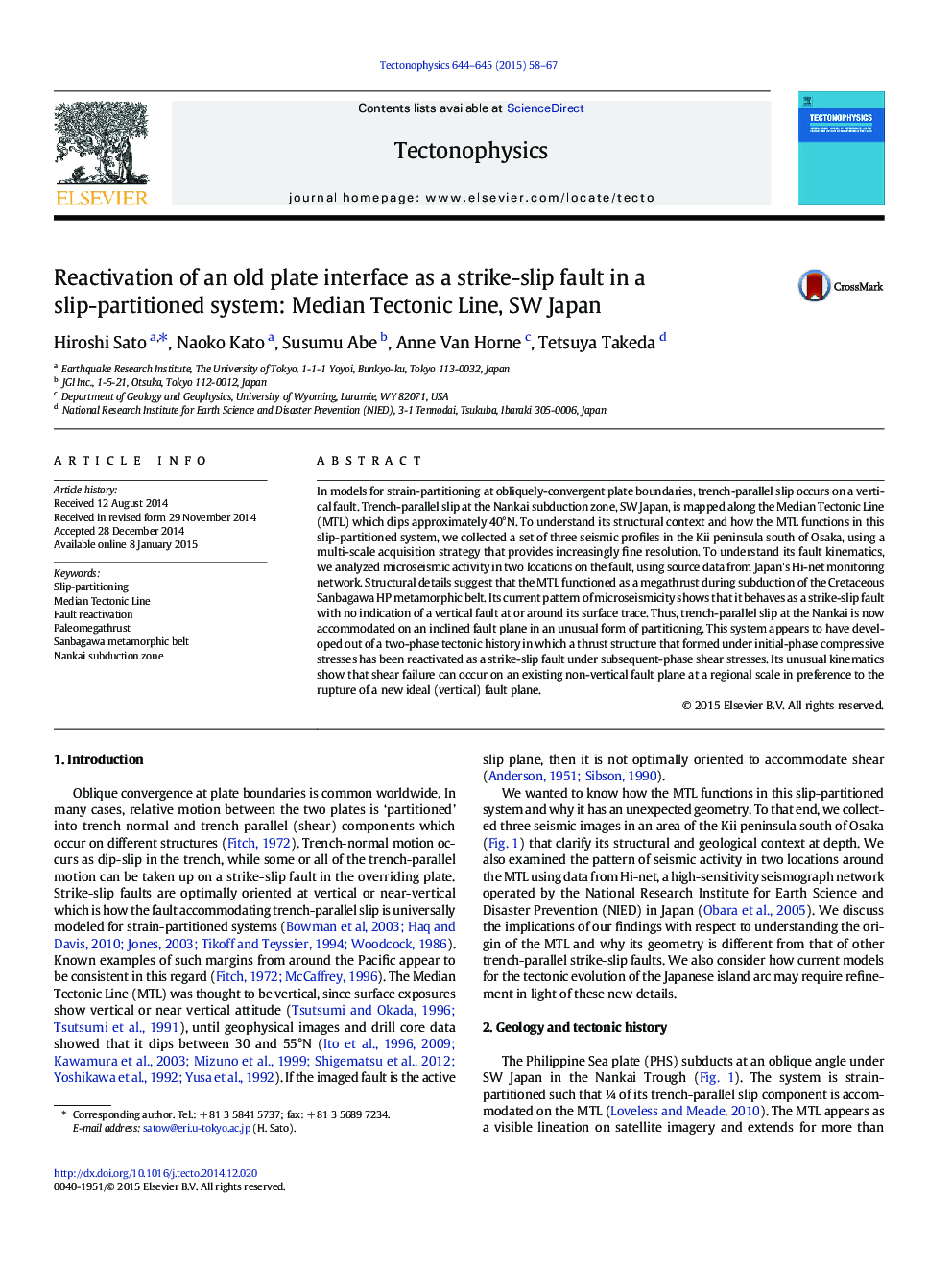| Article ID | Journal | Published Year | Pages | File Type |
|---|---|---|---|---|
| 4691742 | Tectonophysics | 2015 | 10 Pages |
•The Median Tectonic Line (MTL) marks a major strike-slip fault system in SW Japan.•The MTL accommodates trench-parallel slip at the slip-partitioned Nankai margin.•The MTL dips moderately northward at ~ 35–40°.•The MTL originated as a megathrust and has been reactivated as a strike-slip fault.•Strike-slip reactivation of a moderately dipping fault is possible but not common.
In models for strain-partitioning at obliquely-convergent plate boundaries, trench-parallel slip occurs on a vertical fault. Trench-parallel slip at the Nankai subduction zone, SW Japan, is mapped along the Median Tectonic Line (MTL) which dips approximately 40°N. To understand its structural context and how the MTL functions in this slip-partitioned system, we collected a set of three seismic profiles in the Kii peninsula south of Osaka, using a multi-scale acquisition strategy that provides increasingly fine resolution. To understand its fault kinematics, we analyzed microseismic activity in two locations on the fault, using source data from Japan's Hi-net monitoring network. Structural details suggest that the MTL functioned as a megathrust during subduction of the Cretaceous Sanbagawa HP metamorphic belt. Its current pattern of microseismicity shows that it behaves as a strike-slip fault with no indication of a vertical fault at or around its surface trace. Thus, trench-parallel slip at the Nankai is now accommodated on an inclined fault plane in an unusual form of partitioning. This system appears to have developed out of a two-phase tectonic history in which a thrust structure that formed under initial-phase compressive stresses has been reactivated as a strike-slip fault under subsequent-phase shear stresses. Its unusual kinematics show that shear failure can occur on an existing non-vertical fault plane at a regional scale in preference to the rupture of a new ideal (vertical) fault plane.
